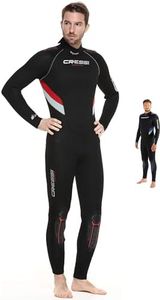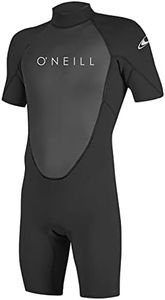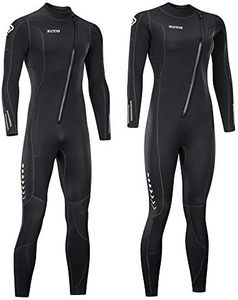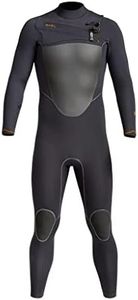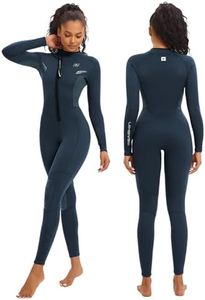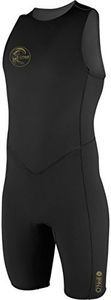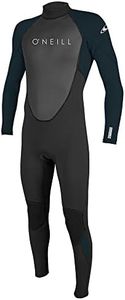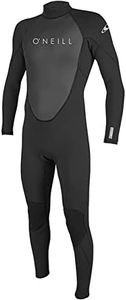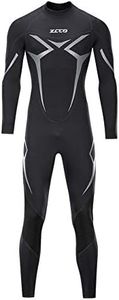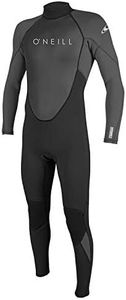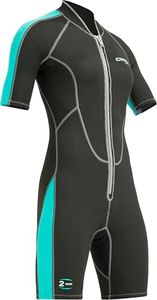We Use CookiesWe use cookies to enhance the security, performance,
functionality and for analytical and promotional activities. By continuing to browse this site you
are agreeing to our privacy policy
10 Best wetsuits
From leading brands and best sellers available on the web.Buying Guide for the Best wetsuits
Choosing the right wetsuit is important to ensure your comfort, performance, and safety in the water. A wetsuit keeps you warm and protected while you swim, surf, dive, or do other water activities. To pick the best one for your needs, pay attention to the main features that affect flexibility, warmth, and fit. Your individual needs and where you'll use it should guide your choices when looking at wetsuit specifications.ThicknessThickness refers to how thick the wetsuit material is, usually measured in millimeters (mm). This matters because thicker wetsuits provide better insulation and keep you warmer in colder water. You'll see thickness described with two or three numbers (like 3/2mm), where the first is the torso and the second is the limbs. Thicker suits (5mm and above) are best for very cold water, mid-range (3-4mm) for cool water, and thinner suits (2mm or less) for warm water. Consider your local water temperatures and your tolerance to cold when choosing thickness.
MaterialMost wetsuits are made from neoprene, a stretchy, insulating rubber. Higher-quality neoprene is more flexible and comfortable, while lower-quality neoprene may feel stiffer. Some wetsuits have additional lining materials for extra warmth or quick drying. If you value maximum comfort and movement, look for high-stretch materials, while extra insulation linings are useful if you plan to be in cold conditions.
Seam ConstructionSeams are how the pieces of the wetsuit are joined together. Basic suits have flatlock stitching, best for warm water but they can let water seep in. Glued and blind-stitched seams are more advanced and prevent water from passing through, making them much warmer for cooler conditions. Taped or welded seams offer top-level warmth and durability, often found in high-end cold-water wetsuits. The best seam type for you depends on how cold the water is and how long you’ll be exposed.
Entry SystemThis describes how you get into the wetsuit—common types are back zip, chest zip, and zip-free. Back zips are easy to put on and remove but may let in a little more water. Chest zips provide a better seal and more flexibility in the back, while zip-free suits are even more flexible and less prone to leaks, but can be trickier to get on. Choose the entry system based on how easy you want it to be to put on, and how important comfort and warmth are for your activities.
Fit and SizingA good fit is crucial—a wetsuit should be snug but not so tight that it restricts your movement or breathing. If it’s too loose, water will get in and you’ll lose warmth. Fit varies by body shape and brand, so always consult the sizing chart provided and try on if possible. Consider what activities you'll do: surfing needs more flexibility around the shoulders, while diving may need a slightly thicker suit. Always aim for a fit that offers warmth, comfort, and good range of motion for your chosen water activity.
